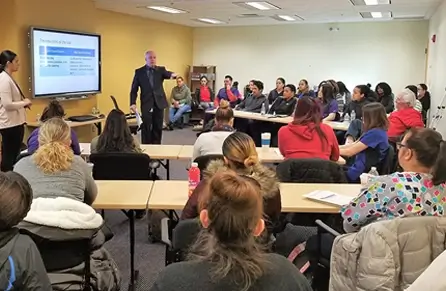Introduction to Sustainable Construction and Trade Practices
In today’s rapidly evolving job market, the emphasis on sustainable practices in skilled trades is more crucial than ever. As a leader in vocational training, LARE Institute is committed to equipping students with the skills needed to thrive in a greener future. Our programs emphasize environmentally conscious construction techniques and sustainable trade practices, preparing individuals for careers that not only meet current demands but also contribute positively to the environment.
At LARE Institute, students are introduced to cutting-edge methods and technologies designed to reduce environmental impact. By embedding sustainability into our curricula, we ensure that graduates are ready to tackle the challenges of modern industry with innovative solutions.
Incorporating Green Technology into Vocational Curricula
Integrating green technology into vocational training is essential for developing a workforce capable of supporting sustainable development. Our Skilled Trades program includes courses on renewable energy systems, energy-efficient construction, and sustainable materials. By providing hands-on experience with these technologies, LARE Institute empowers students to lead in their respective fields.
In addition to technical skills, our courses emphasize the importance of sustainable decision-making and resource management. This comprehensive approach ensures our graduates can assess and implement eco-friendly practices in real-world scenarios, making them invaluable assets to any employer.
Case Studies: Sustainable Projects by LARE Graduates
Our graduates exemplify the success of LARE Institute’s commitment to sustainability. One notable project involved a team of alumni who collaborated on a solar-powered community center, significantly reducing its carbon footprint while providing essential services to local residents. This project not only showcases their technical expertise but also their dedication to community-focused initiatives.
Another success story involves a graduate who launched a business specializing in sustainable home renovations. By utilizing energy-efficient techniques and materials, they have transformed numerous homes into environmentally friendly spaces, demonstrating the real-world impact of our training.
Explore more success stories to see how our graduates are making a difference.
The Economic and Environmental Benefits of Green Skills
The demand for professionals with green skills is on the rise, offering significant economic and environmental benefits. Green jobs often provide higher wages and job security, addressing the financial challenges faced by many seeking vocational training. By focusing on sustainability, LARE Institute supports economic growth and environmental stewardship.
Our programs prepare students to contribute to a sustainable economy, where industries benefit from reduced resource consumption and improved efficiency. This not only enhances profitability but also strengthens community resilience by supporting local ecosystems and reducing environmental degradation.
Partnering with Businesses for Sustainable Workforce Development
LARE Institute values partnerships with local businesses to foster sustainable workforce development. By collaborating with industry leaders, we ensure our programs align with current market needs and emerging trends. This collaboration facilitates a steady pipeline of skilled graduates ready to meet the demands of employers committed to sustainability.
Businesses benefit from hiring well-trained, locally sourced talent that understands the importance of sustainability. By investing in education, companies contribute to community growth and gain employees who bring both technical skills and a strong work ethic.
For more information on how your business can benefit from partnering with LARE Institute, visit our contact page.
Are you ready to join a community that believes in your potential and supports your journey towards a sustainable career? At LARE Institute, we offer empowering programs that not only provide essential skills but also foster a sense of belonging. Whether you’re an individual seeking career advancement or a business looking to invest in local talent, we’re here to help you achieve your goals. Discover more about our programs and how we can support your future by visiting Why LARE Institute.








